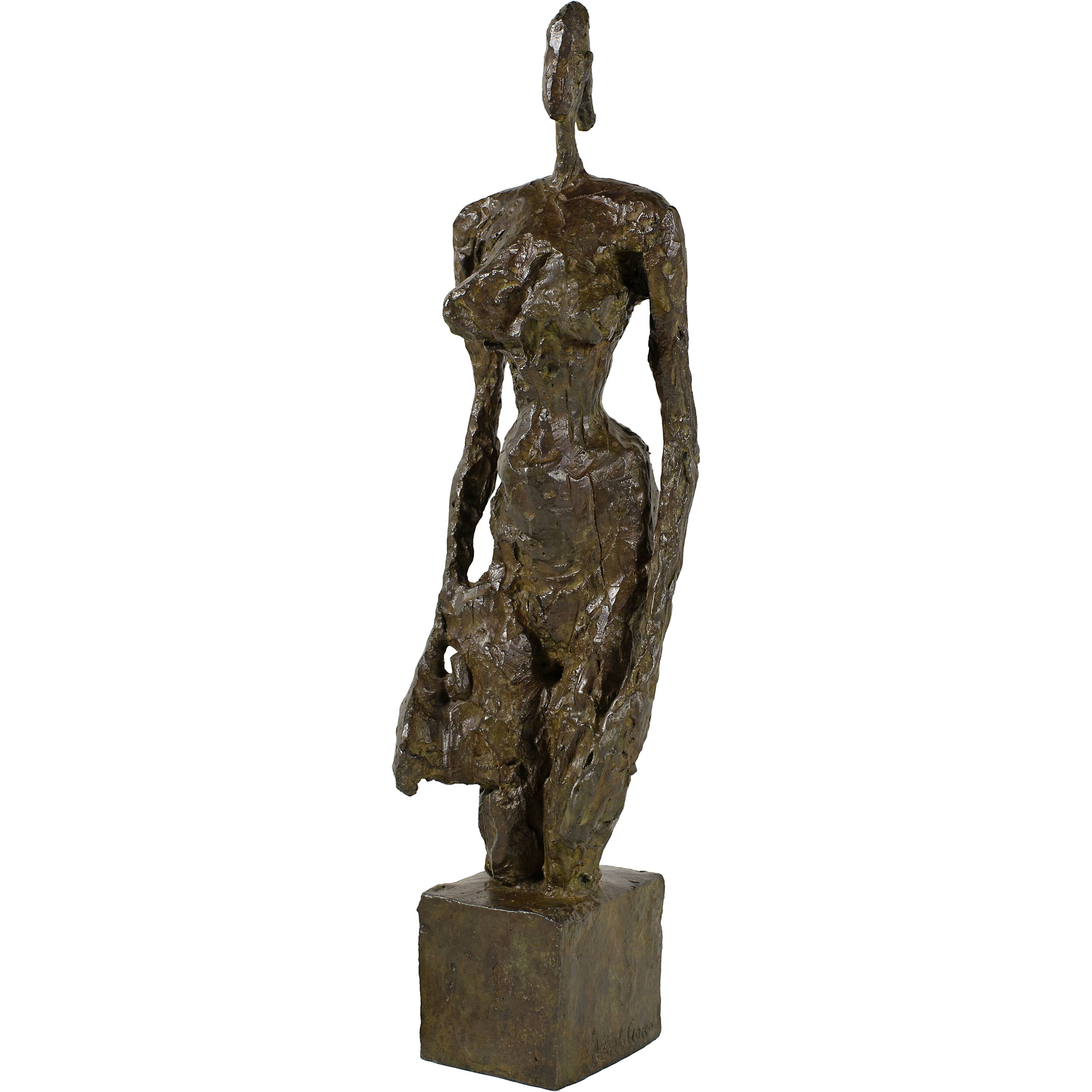- EN
Log in
- Live Auctions
- Past auctions
- More
- Gallery
- Art Dealing
- Publishing
- Kornfeld today
- The Story of Kornfeld
- Information






Borgonovo 1901 - 1966 Chur
1953, cast 1991
Bronze
43,2x11,5x9,5 cm
At the bottom of the base the signature "Alberto Giacometti", the stamped number "7/8" and the foundry mark "Susse Fondeur / Paris".
A certificate of authenticity from the Comité Giacometti (Fondation Alberto et Annette Giacometti, Paris), dated March 2011, is available. The bronze appears in the Fondation's electronic catalog raisonné under the number ADG 1727
Annette Giacometti
Estate of Annette Giacometti
Auktion Ader Tajan, Paris, 11.7.1994, cat. no. 8; acquired there for
International private collection
Paris 1991/1992, Musée d'Art Moderne de la ville de Paris, Alberto Giacometti, Sculptures - peintures - dessins, p. 321 (another copy)
London 2015, S2 Gallery, The Nude in the XX & XXI Century, p. 72/73, ill.
London 2016, Gagosian Gallery, In search of the absolute
Very nice cast with green-brown patina
In September 1945, shortly after the end of World War II, Alberto Giacometti drove back to Paris for the first time. In 1946 he moved in with Annette Arm, whom he met in Geneva in 1943 and finally married in 1949. The sculptures were now getting longer and thinner, he found his own special language, which should bring him world fame early on
From the 1950s onwards he began working with models again, and of his wife Annette he created numerous sculptures, paintings, drawings and graphics. It is characteristic from around 1952/1953 that the figures still have the clear, reduced design language of his “slim” figurines, but are now “more expansive”. Annette's portrayals in particular are incomparably personal works by the artist
Working in front of the model allows and requires a very direct and sometimes rugged processing of the material, which can be seen wonderfully on the unique surfaces. The direct inclusion of a pedestal is of great importance, it does not simply form the foundation of the figure, rather it is a well-proportioned, calm counterpart to the free forms of the people. The figures with the pedestals become timeless monuments, witnesses of life and transience
The sculpture offered here, with its simplicity and reduction to the classic female body, represents an important milestone in Giacometti's sculptural oeuvre
1953, Guss 1991
Bronze
43,2x11,5x9,5 cm
Auf dem Sockel mit der Signatur "Alberto Giacometti", der eingestanzten Nummerierung "7/8" sowie dem Giesserstempel "Susse Fondeur/Paris". Unten im Sockel mit der Giessermarke "Susse Freres / Paris / Cire perdue"
Echtheitsbestätigung des Comité Giacometti (Fondation Alberto et Annette Giacometti, Paris), datiert vom März 2011, liegt vor. Die Bronze figuriert im elektronischen Werkverzeichnis der Fondation unter der Nummer ADG 1727
Annette Giacometti
Nachlass Annette Giacometti
Auktion Ader Tajan, Paris, 11.7.1994,
Internationale Privatsammlung
Paris 1991/1992, Musée d'Art Moderne de la ville de Paris, Alberto Giacometti, Sculptures - peintures - dessins, pag. 321 (anderes Exemplar)
London 2015, S2 Gallery, The Nude in the XX & XXI Century, pag. 72/73, reprod.
London 2016, Gagosian Gallery, In search of the absolute
Sehr schöner Guss mit grün-brauner Patina
Im September 1945, kurz nach dem Ende des Zweiten Weltkriegs, fuhr Alberto Giacometti zum ersten Mal zurück nach Paris. 1946 zog er dort mit Annette Arm zusammen, die er 1943 in Genf kennengelernt und 1949 schliesslich geheiratet hatte. Die Plastiken wurden nun zunehmend länger und dünner, er fand seine besondere, eigene Sprache, die ihm schon früh Weltruhm einbringen sollte
Ab den 1950er Jahren arbeitet er vermehrt wieder mit Modellen, von seiner Ehefrau Annette entstanden so zahlreiche Skulpturen, Gemälde, Zeichnungen und Graphiken. Charakteristisch ab ca. 1952/1953 ist, dass die Figuren zwar noch die klare, reduzierte Formensprache seiner “überschlanken” Figurinen aufweisen, nun aber “ausladender” werden. Gerade die Darstellungen von Annette sind immer aufs Neue unvergleichlich persönliche Arbeiten des Künstlers
Die Arbeit vor dem Modell erlaubt und erfordert eine sehr direkte und zum Teil schroffe Bearbeitung des Materials, was sich an den einzigartigen Oberflächen wunderbar ablesen lässt. Der direkte Einbezug eines Sockels ist von grosser Bedeutung, er bildet nicht einfach bloss das Fundament der Figur, er ist vielmehr ein wohl proportioniertes, ruhiges Gegenstück zu den freien Formen der Personen. Die Figuren werden mit den Sockeln zu zeitlosen Monumenten, zu Zeugen des Lebens und der Vergänglichkeit
Die hier angebotene Plastik stellt in ihrer Schlichtheit und Reduktion auf den klassischen Frauenkörper eine wichtige Wegmarke im plastischen Œuvre Giacomettis dar







